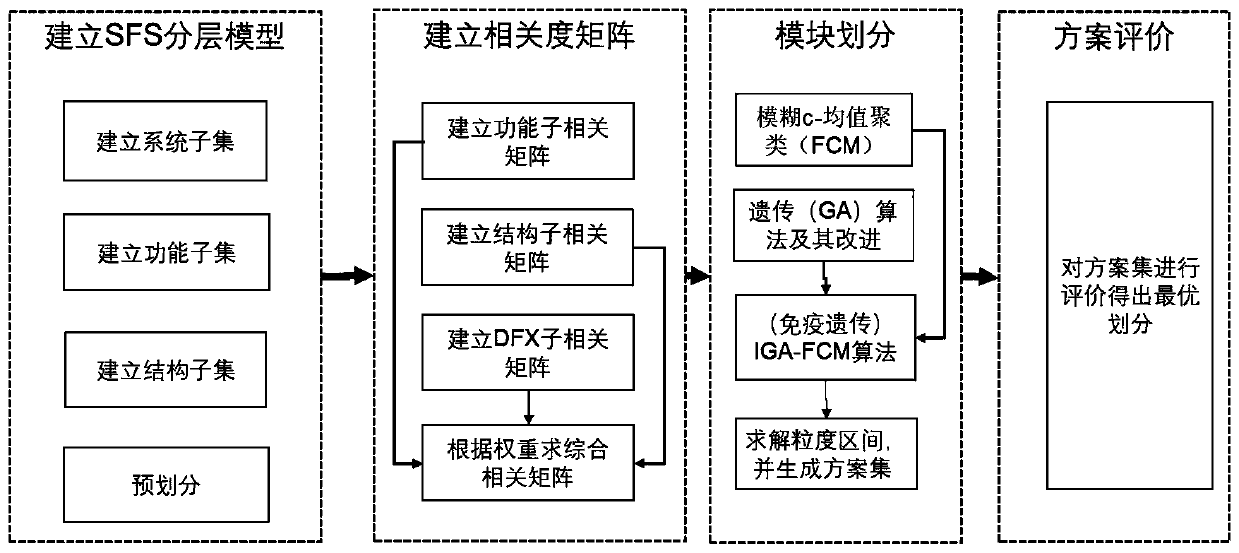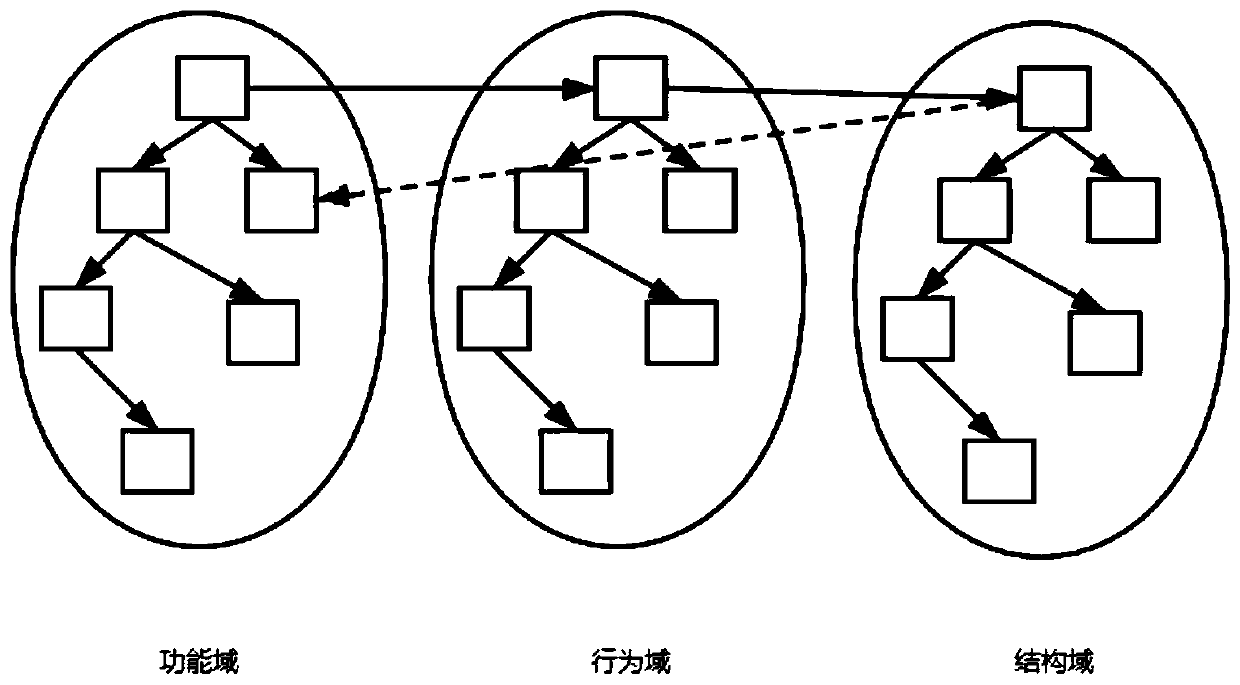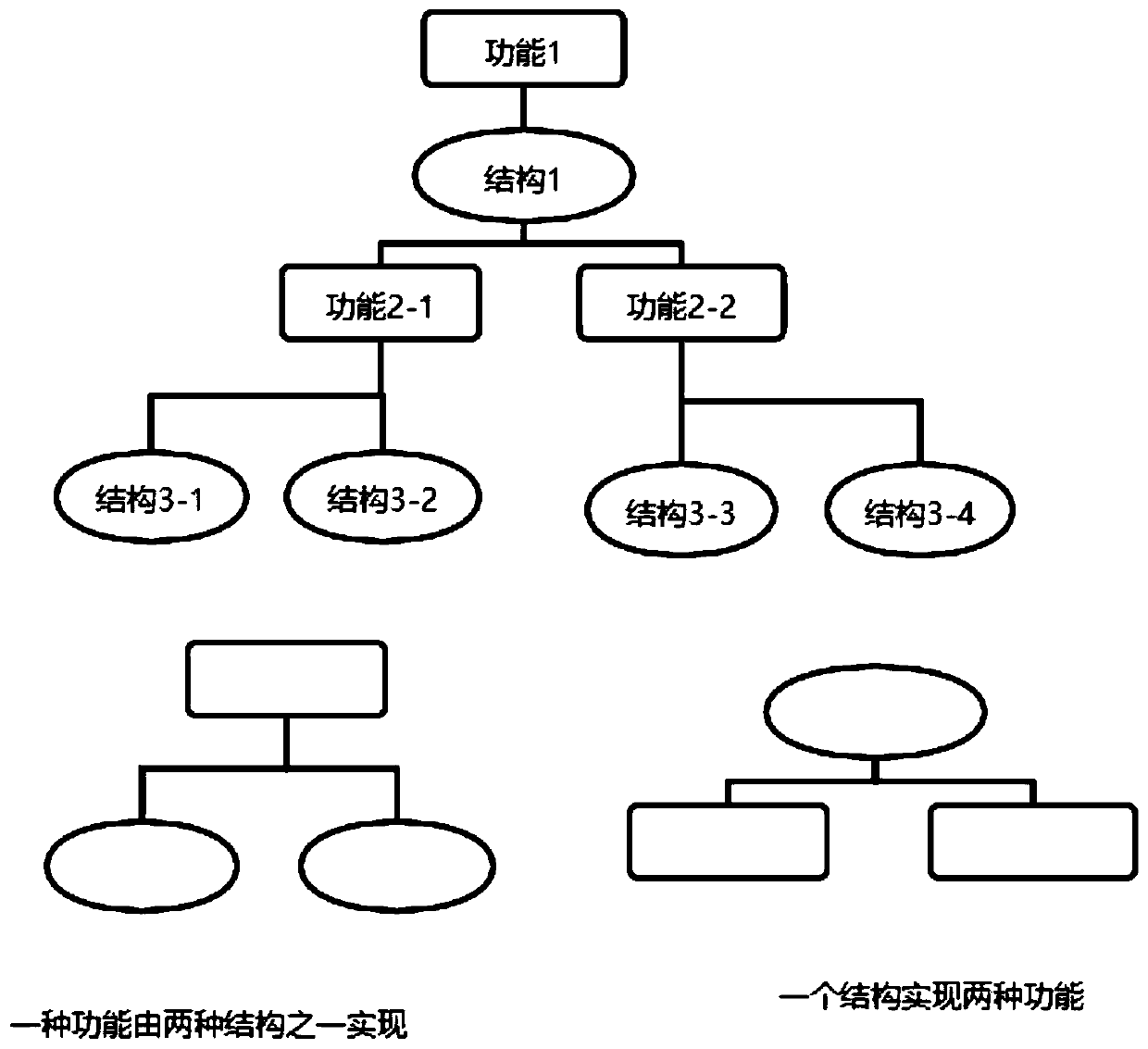Complex system module division method based on system, function and structure layering
A complex system and layered model technology, applied in genetic models, power amplification, calculation models, etc., can solve initial value sensitivity, poor global convergence performance, fuzzy clustering method is not suitable for computer solutions, and does not consider the division results issues such as the impact of
- Summary
- Abstract
- Description
- Claims
- Application Information
AI Technical Summary
Problems solved by technology
Method used
Image
Examples
Embodiment Construction
[0065] Taking the nose of a civil aircraft as an example, the present invention is verified by examples.
[0066] Step 1: Build the SFS layered model
[0067] Step 1.1: Create a subset of the system
[0068] Since the division of system components for the modular delivery of the civil aircraft nose is relatively complete, the system subset of the civil aircraft nose is directly divided into five subsystems: flight control, hydraulic pressure, interior decoration, environmental control, and electrical and electronic subsystems.
[0069] Step 1.2: Form functional and structural subsets
[0070] Take the flight control system, a subsystem in the nose of a civil aircraft, as an example to verify the subsequent module division method. The rest of the subsystems can be divided according to the example.
[0071] Combined with the product bill of materials, the following list of main components is formed as shown in Table 1.
[0072] as follows Figure 6 Analyze the function of t...
PUM
 Login to View More
Login to View More Abstract
Description
Claims
Application Information
 Login to View More
Login to View More - R&D
- Intellectual Property
- Life Sciences
- Materials
- Tech Scout
- Unparalleled Data Quality
- Higher Quality Content
- 60% Fewer Hallucinations
Browse by: Latest US Patents, China's latest patents, Technical Efficacy Thesaurus, Application Domain, Technology Topic, Popular Technical Reports.
© 2025 PatSnap. All rights reserved.Legal|Privacy policy|Modern Slavery Act Transparency Statement|Sitemap|About US| Contact US: help@patsnap.com



